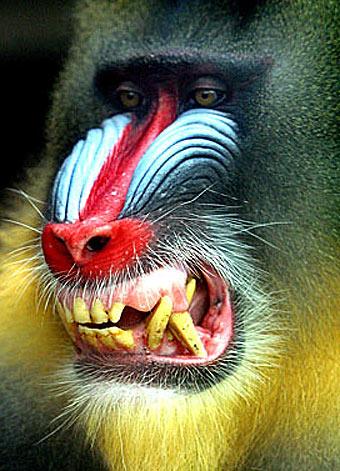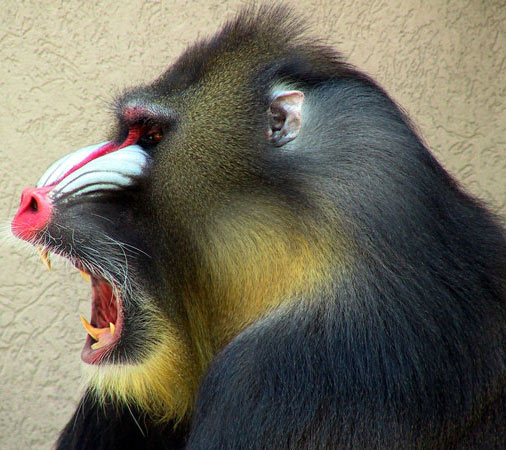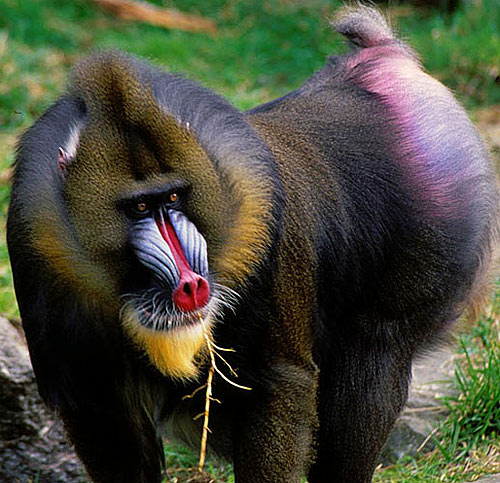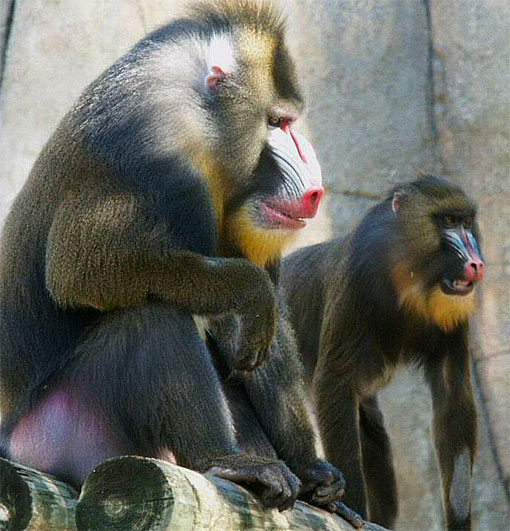Mandrill – The Largest and Most Colorful of All Monkeys

What a monkey the mandrill is! Not only is it the world’s largest species of monkey, with males occasionally weighing as much as 110 lbs (50 kg) and standing up to 3 ft (90 cm) tall; it’s also the most colorful monkey there is. In fact, Charles Darwin once said of this large baboon, “no other member in the whole class of mammals is colored in so extraordinary a manner as the adult male mandrills”. With it’s olive green or dark gray coat with yellow and black bands, a white belly, a hairless face, red nostrils and lips, a yellow beard with white tufts, an elongated muzzle with it’s own distinctive characteristics (a red stripe down the middle and protruding blue ridges on the sides) and a lower body that can be red, pink, blue, scarlet, and purple, the mandrill is a sight to see! The female is not so massive and scary, she looks small in comparison to the male and is not so brightly colored.

The mandrill can be found in the forests of Southern Cameroon, Gabon, Guinea and The Congo in huge groups known as “hordes”. Hordes are stable groupings that average around 620 individuals, but can often be even larger. In fact, a horde of over 1300 that was observed at Lope National Park Gabon is the largest grouping of non-human primates ever recorded! These hordes are known to never sleep in the same trees two nights in a row and spend their days migrating and eating. They survive off of fruit, leaves, stems, bark, fibers, mushrooms, soil, ants, beetles, termites, crickets, spiders, snails, scorpions, eggs, birds, tortoises, frogs, porcupines, rats, shrews and occasionally small antelope.

The male will leave it’s natal group at around six years of age, and will spend the rest of it’s long life (in captivity they have been seen living up to 31 years) on the peripheral of the horde, only entering the main group to mate. Mandrills use grunts and teeth baring to communicate over both short, and long distances. They are considered a “vulnerable” species, and are in danger of becoming extinct if their natural habitat continues to be destroyed.

